Toho Panciteria Antigua: A taste of the 1800s in new Binondo
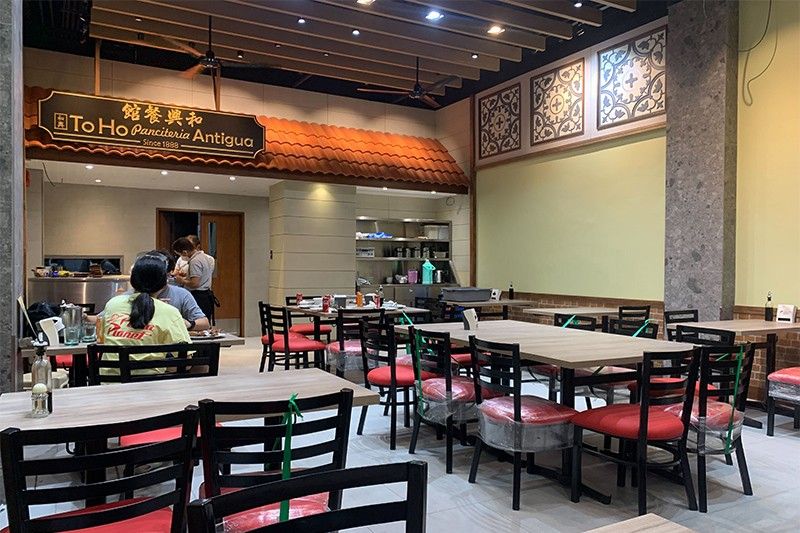
MANILA, Philippines — If there’s one restaurant that could claim to serve authentic Chinese food in Manila, it would have to be Toho Panciteria Antigua.
It is located in the world’s oldest Chinatown, Binondo, no less and is touted as the “oldest restaurant in the Philippines."
Binondo is celebrating its 428th founding anniversary on March 29. In 1594, Spanish Governor Luis Pérez Dasmariñas founded Binondo as a permanent settlement for Chinese immigrants.
Meanwhile, a Google search about Toho Panciteria Antigua would render you several results including fun facts that one of its famous patrons is national hero, Dr. Jose Rizal.
Posts on history-oriented Facebook pages said that if “Travel Time” host Susan Calo Medina is to be believed, “Rizal even ate there while he was studying in Intramuros.”
The Department of Tourism, Culture and Arts of Manila also claimed in a recent Facebook post that another national hero, Andres Bonifacio, used to eat his pancit and asado in this restaurant, before attending the founding meeting of the Katipunan.
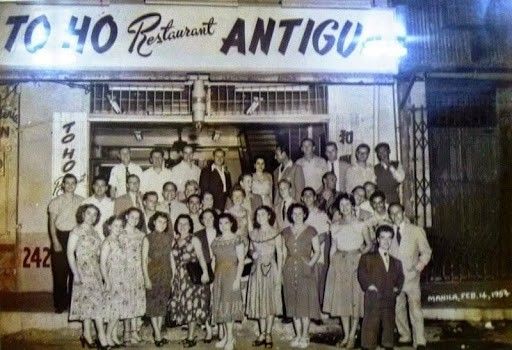
While these are unverified hearsays passed down to generations, to foodies, these are what make the panciteria even more enticing and intriguing to visit.
Founded in 1888, Toho Panciteria Antigua, which used to be operated by five Chinese friends, survived world wars I and II and is now threading amid another historic phenomenon, the COVID-19 pandemic. It was also known as New Toho Food Centre.
Following Waze, it’s quite a maze to get to this restaurant by car. There are many side streets to go through before you reach Tomas Pinpin Street. And then in the middle of the street, you will see the orange canopy with multi-colored signage at the top bearing the restaurant's name and some Chinese characters.
It does not appear old if not for other writings at the bottom that says “Since 1888.”
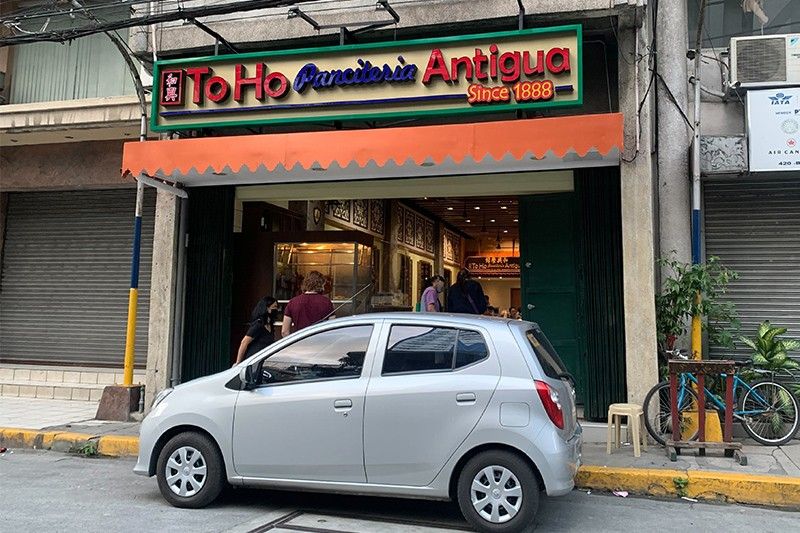
The restaurant is probably easier to reach by foot just like most of the food establishments in Binondo.
Unlike other contemporary restaurants in the area the Panciteria doesn’t have neighboring restaurants. If you are not a frequent visitor of Binondo, you should know that the food-driven district has sprawling restaurants with various specialties. Their looks are almost identical except for their signages. Some are renovating their stores.
The Panciteria is surrounded by vintage furniture shops and a travel agency. It is also just three blocks away from equally historic Escolta, dubbed “Queen of Manila Streets.”
It took me two visits before I could finally eat there.
Failed attempt
My first try to visit Toho Panciteria Antigua was on a Sunday afternoon, around 3:25 p.m., according to the time stamp on my photos. While the restaurant was open and there were customers inside, the owner, Alger Wong, said they only operate for half-day on Sundays. He added that they usually take carryout orders, but he said they already ran out of stocks for the day.
During that visit, it was evident that it is still doing good despite the onslaught of the pandemic. Since it does not have doors, I peeked and estimated that there were at least two tables occupied despite it being closed at that time. There was also a Grab driver waiting for his takeaway order outside.
“Dinadayo kasi talaga ito,” he said, talking to me as if he knew that I was disappointed. Was I? Probably just a little. But, was it worth visiting again is another question.
Second try
Of course, there is no stopping us from going on a food adventure.
Before we visited on a second attempt, we made calls to the other branch in Parañaque City to ask if the original branch is open on a Saturday. The staff member said the Manila branch is open for dine-in until 7 p.m. Only the Parañaque branch had available contact details online, so the call was coursed through them first.
At around 2:40 p.m. on that Saturday, we arrived. I was with two other companions. The restaurant was still packed.
The staff was accommodating and allowed us to park outside the establishment.
At the entrance resto, you will be welcomed by a food glass display with what looks like a roasted chicken and a variety of cold cuts and other meats including chicken intestines inside.
Beside that display is a table with laminated menus lined up. This is where customers can view the Panciteria’s offerings and order take out or opt for dine-in. The one-page back-to-back menu is like those you can find at casual old Chinese restaurants also in Binondo.
It took around 10 minutes before we were attended to by a staff member who asked us if we would dine in.
Before letting us in, we were also asked if we were vaccinated against COVID-19. Following the government’s safety protocols, they allow dine-in of fully vaccinated individuals at 50% capacity of the venue at the time of visit.
It felt safe to dine there. They have a thermometer scanner with an alcohol dispenser stand dedicated to visitors.
A waiter ushered us in and welcomed us to sit at a six-seater table. Pre-pandemic, all seats can be occupied but now they placed straw strings to indicate they are off-limits.
From a 70-seating capacity on the first floor, they can only accommodate 35 at a time during that period. The second level is off-limits for now.
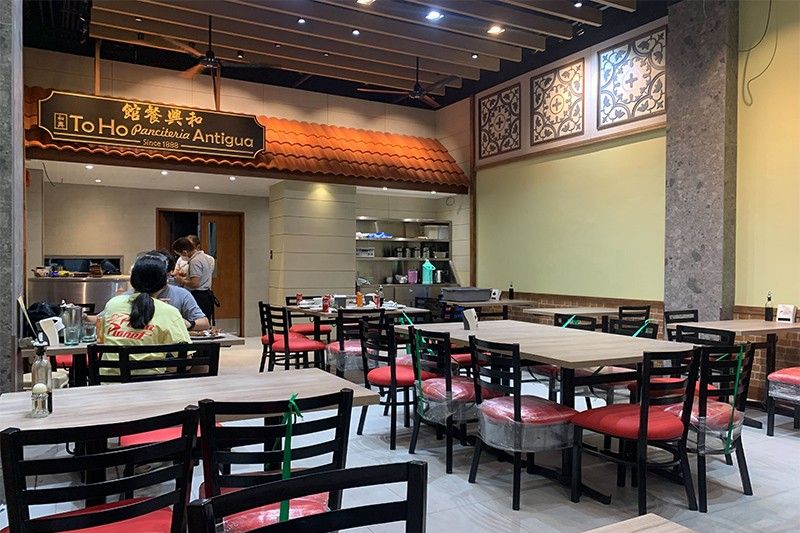
Our gastronomic adventure began after the waiter handed us the menu with different offerings of soup, vegetables, pork, beef and seafood. They also serve noodles, fried rice, rice toppings and cold cuts.
We ordered the best-sellers the waiter recommended in small portions just so we could try many dishes out. These are kikiam, lumpiang shanghai pork, yang chao and miki bihon.
While waiting for our orders, I observed that there were only three waiters catering to all guests. One of them also mans the cashier.
Modern look
My first impressions were confirmed when I looked around the first level of the restaurant, which does not show any sign that it is the oldest restaurant in the country. There is a sign that claims it is at the entrance, but other than that, it looks very new.
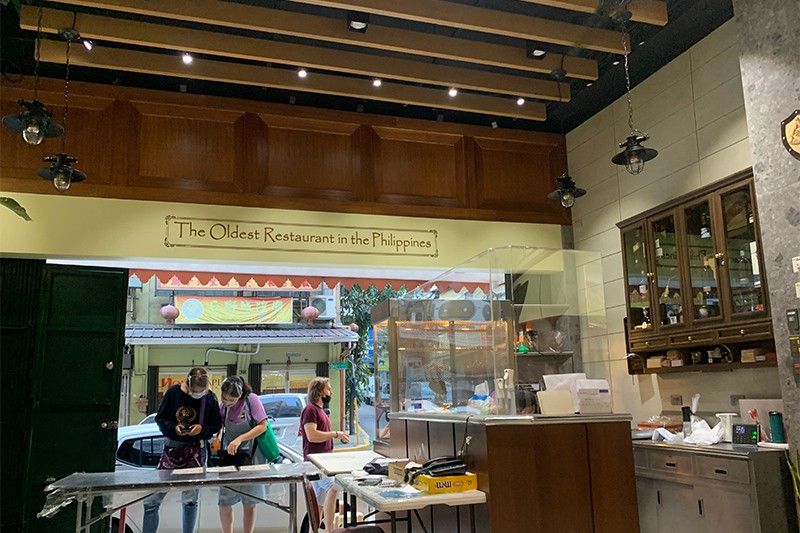
I learned that it was restored in the 1960s after the fire and then it was renovated anew recently with a mix of vintage and modern looks.
The walls have faux colonial grid windows with floral patterned tiles embellishment at the top. The rest of the wall was painted yellow. It is also well-lit and properly ventilated.
There is likewise a stair leading to the second floor that used Mandala-patterned tiles.
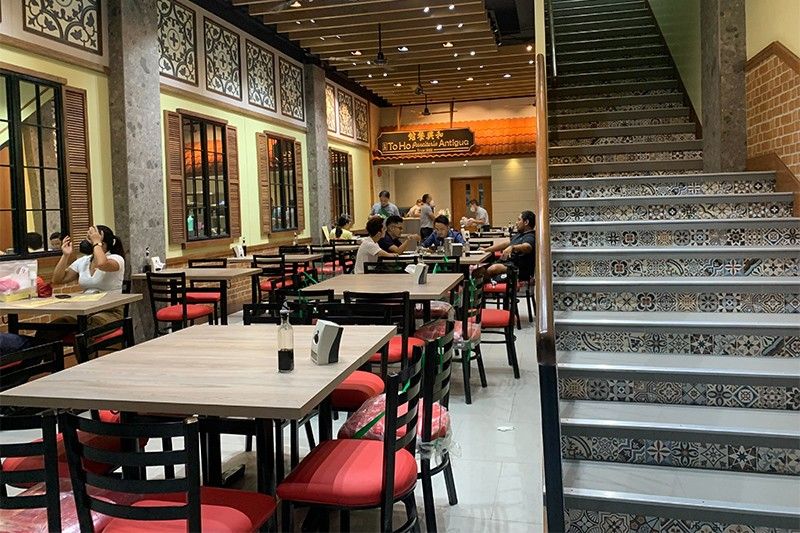
Philstar.com/Rosette Adel
Despite its modern look, the aroma inside gives off an old Chinese restaurant vibe. The fragrance is undoubtedly from a freshly cooked dish, straight from the wok.
After 10 minutes, our asado order arrived. Priced P260 for ¼ kilo, this could be for three to four people. It does not have any sauce; it is already sweet. The meat, cut in thin slices, was also very tender.
Our other orders, two pieces of kikiam (P78 per piece), pork lumpiang shanghai (P225) and miki Bihon (P200), arrived at the same time. Our fried rice order, yang chao, got a little delayed because the waiter failed to take it initially. We probably got lost in translation because of the muffled voices due to face masks.
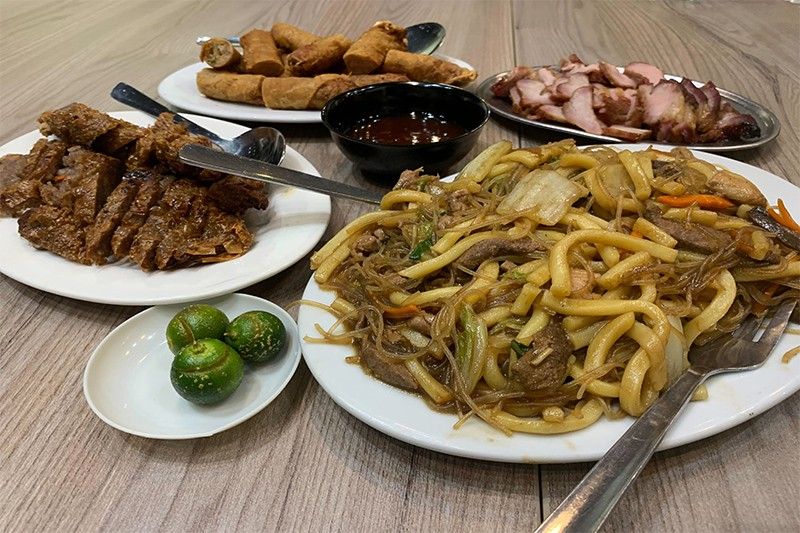
The first I tried among this batch was the lumpiang shanghai. It was nothing like I’ve tried before. It was meaty that you could not feel the wrapper much unlike the Filipino style ones with crispy outer layers.
The lumpia roll was flavorful but there was no dominant taste as the flavors blend well.
It was accompanied by a sweet red sauce that matches it perfectly. This dish is one of the must-tries.
The two pieces of kikiam, on the other hand, which were cut into slightly thin slices, were also nothing like those I’ve tried before. It was sweet and, in my opinion, doesn’t need sauce.
In photos, the kikiam slices appear to have crusty skin but it doesn’t feel that way if you eat them. The two pieces could also feed more people since they were sliced in proportion.
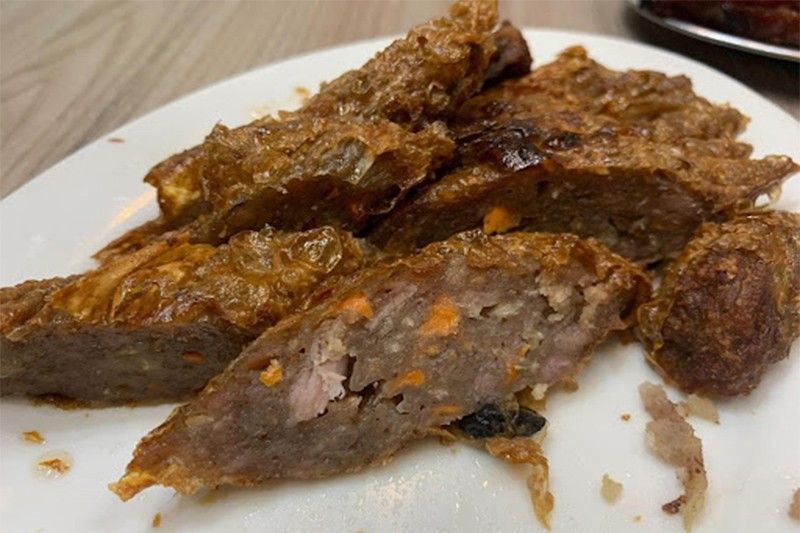
Both the pork lumpiang shanghai and kikiam are perfect to pair with plain rice or to be munched on their own.
The stars of our dining experience were undeniably the miki bihon and yang chao. The restaurant was generous with toppings on both the noodles and the fried rice.
The miki bihon got hefty pieces of pork, liver, and veggies while the yang chao got shredded shrimps, beans and carrots, making them savory. They are also not that salty contrary to my expectation.
I especially loved how the noodles of miki bihon were easy to chew. I have no words for the bowl of fried rice because it was superb and recommended.
I am not really into eating rice but whenever it’s fried rice, I make an exemption and taste it. I could not remember how many rounds I took to down most of the fried rice.
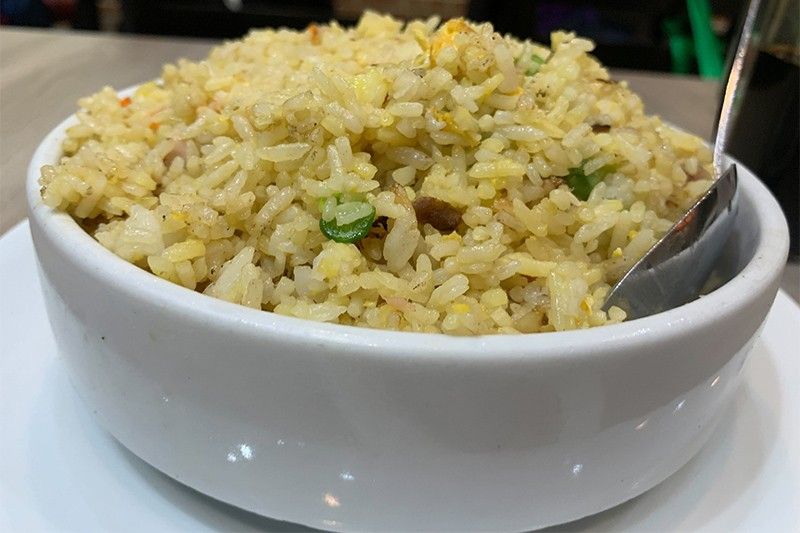
All the dishes tasted authentic to me, but the most unforgettable ones are the lumpiang shanghai, yang chao and miki bihon.
For drinks, we ordered a can of soft drink and bottled water which are understandably pricier than the ones sold in the market.
If there is something old in this restaurant, it is undeniably the food offerings. They are traditional with recipes said to be handed down to the current cooks from more than a century ago.
If the taste of the food does not validate its old status, then I don’t know what will.
Setting the debate on its age aside, I now understand why patrons keep coming back to Toho Panciteria Antigua. It offers affordable, tasteful Chinese food in an ambiance that is also comfortable.
Its building may change from time to time, but the taste of its best-selling food offerings could last centuries more and satisfy several tummies of the future generation of foodies to come.
Truly, this restaurant must be on the top to-visit list when in Binondo.
Rating: 4/5




















